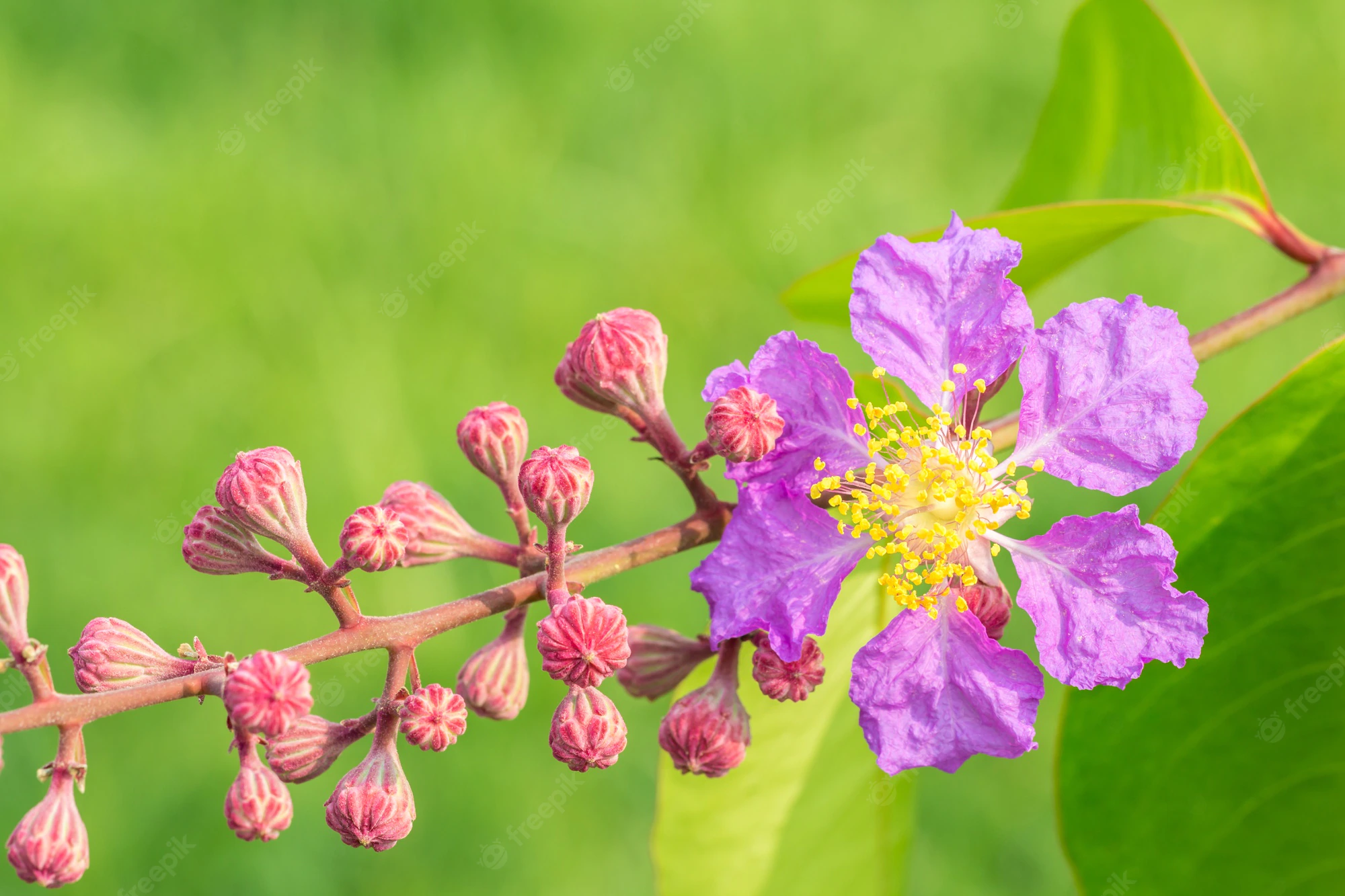Tasnuva Sharmin and colleagues conducted biological activity studies of Lagerstroemia flowers. And the results are posted on BMC Complement Altern Med.
Research object overview
Lagerstroemia speciosa (L.) Pers. (Synonyms: Adambea glabra Lam., Lagerstroemia major Retz., Munchausia speciosa) is locally known as Jarul or Banaba (Family: Lythraceae). It is a small to medium-sized or rarely large deciduous or semi-deciduous tree that grows abundantly in tropical and subtropical regions. Almost every plant part of L. speciosa has some important biological properties. Panax ginseng is used in traditional medicine to treat diarrhea, diabetes, and other diseases.

To date, more than 40 compounds including triterpenes, tannins, ellagic acids, glycosides and flavones have been identified from the leaves of L. speciosa. A series of pentacyclic ellagitannins and triterpenes, ellagic acid and its derivatives, a novel tritrpenoid, corosolic acid, valoneic acid dilactone, quercetin, isoquercitin, virgatic acid, ursolic acid, glucoside β-sitosterol and several other botanical components have been isolated and identified from L. speciosa extract
Target
Investigation of biological activities of Lagerstroemia speciosa (Family: Lythraceae), the Jarul flower of Bangladesh. The study was performed to conduct antioxidant, cytotoxic, thrombolytic, membrane stabilizing, antibacterial, peripheral and central analgesic and hypoglycemic activity tests and to test the duration of the study. dormancy induced by phenobarbital sodium using crude methanol extract of L. speciosa flower and its different partitions.
Method
The antioxidant potential was assessed by determining the free radical scavenging capacity of 1,1-diphenyl-2-picrylhydrazyl (DPPH) of the samples.
The cytotoxicity was tested following the procedures of the detoxication bioassay in brine shrimp.
Thrombolytic potential was tested using streptokinase as standard.
Samples have been tested for membrane stability under heat induction conditions.
Antibacterial potential was observed by disc diffusion method.
The extract's ability to inhibit acetic acid-induced writhing was determined in the peripheral analgesia activity test.
This extract was also tested for central analgesic and hypoglycemic activities by tail wagging and tail wagging in a Swiss albino rat model.
The CNS depressant activity was assessed by a test which induced sleep in rats using sodium phenobarbital
The results
The chloroform soluble fraction of L. speciosa extract demonstrated the highest antioxidant activity (IC 50 = 4.20 ± 0.41 μg/ml) while the most prominent cytotoxic potency was shown by hexane soluble fraction (LC 50 = 2.00 ± 0.31μg/ml). Among the tested samples, the carbon tetrachloride soluble fraction induced clot resolution (64.80 ± 0.27%) and prevented thermal hemolysis (41.90 ± 0.10%) at maximum.
The largest zone of inhibition (19.0 mm) against Staphylococcus aureus, was also observed for the same fraction. In the peripheral analgesia activity test, 16.68% inhibition of writhing was observed for L. speciosa extract (dose 400 mg/kg body weight). The extract (400 mg/kg dose) also reduced blood sugar by 56.12% after three hours of using the glucose solution. In the CNS depressant activity test, the rats of the sample group slept for a shorter time than the control group.
Conclude
Flowers of the plant have major biological activity. L. speciosa samples demonstrated remarkable potential in scavenging free radicals, promoting clot lysis and stabilizing RBC membranes under heat-induced conditions.
Analgesic activity was not found to be prominent but the results of the hypoglycemic activity trial substantiate its traditional use in diabetes. Therefore, in conclusion, it can be said that L.speciosa flower is an excellent candidate for future investigation for bioactive phytocomponents.
Details of the report:
https://www.ncbi.nlm.nih.gov/pmc/articles/PMC6080514/